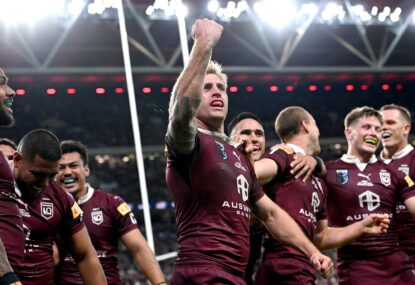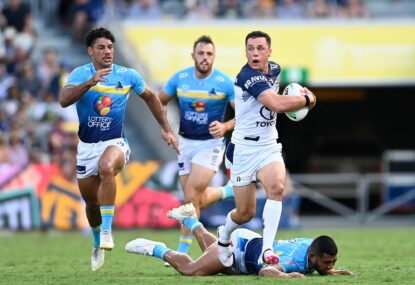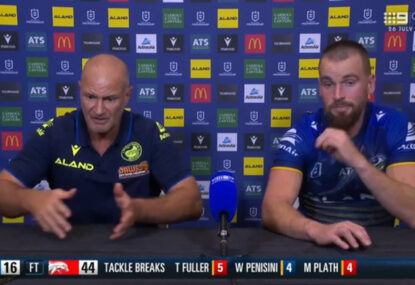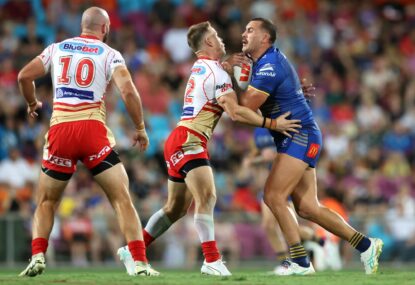When I reflect on the 2018 rugby league season, there are a couple of highlights that immediately spring to mind.
The New South Wales Blues men’s team winning the State of Origin series for the first time since 2014.
The emergence of the next crop of rugby league superstars including Kalyn Ponga, Victor Radley and Jamayne Isaako.
The farewell tour for Johnathan Thurston around the country as fans and clubs celebrated his retirement.
The fact that the New Zealand Warriors made the finals and that the South Sydney Rabbitohs made it so deep into the finals were also memorable moments for me.
All these moments were pretty special, but they come nowhere near my favourite part of this year’s NRL season – the continued growth and development of the women’s game.
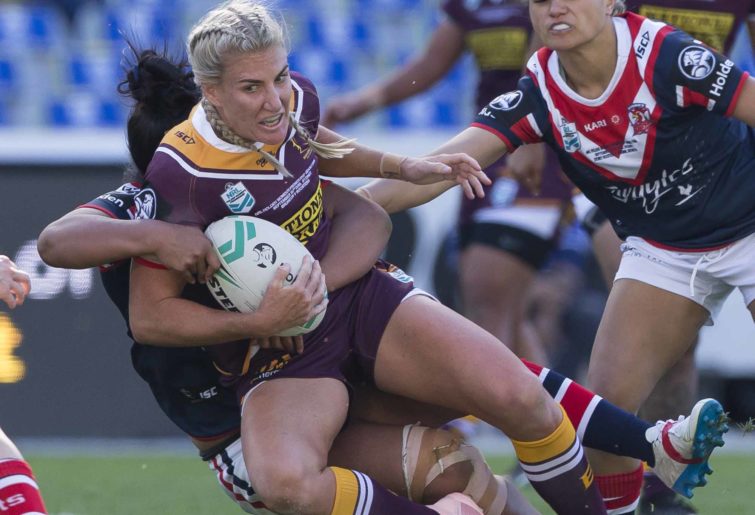
(AAP Image/Craig Golding)
For avid followers of the women’s game, this year had so many highlights including the commencement of the NRL Women’s Competition in September and the inaugural women’s State of Origin held at North Sydney Oval in June.
The latter took place in front of over 9000 fans who couldn’t wait for the conclusion of the game to storm the field and celebrate the emergence of new heroes like Isabelle Kelly, Kezie Apps, Meg Ward and Ali Brigginshaw.
Despite some controversies throughout the year, including the decision to only begin the competition with four teams – the Brisbane Broncos, New Zealand Warriors, Sydney Roosters and St George Illawarra Dragons (omitting the South Sydney Rabbitohs and the Cronulla Sharks) and the scheduling and timing of the competition itself, the NRLW was also very well received.
The decision to only begin with four teams meant that the competition was not only consistent but also very good quality, and the decision to only play four rounds left everyone hungry and wanting more. A positive position to be in at the end of season one.
This week, the NRL announced its intentions for the women’s game in season 2018 and the second iteration of the NRLW. The calendar is as follows.
In addition to already existing local and state competitions across the country, Indigenous and Maori All Stars teams will feature as part of the NRL Harvey Norman All Stars double-header on Friday 15 February at AAMI Park in Melbourne.
The NRL Women’s National Championship will be played on the Gold Coast between 30 May – 2 June.
A stand-alone Women’s State of Origin match will be played on Friday 21 June at North Sydney Oval.
This will be followed by the second iteration of the NRLW which will remain the same as this year – that is, a four-week competition across the NRL Finals period with each team to play each other once.
Then there will also be four international women’s teams competing playing in the World Cup Nines tournament in October at Bankwest Stadium.
Some international fixtures for the Australian Jillaroos will also be announced shortly for the end of the year.
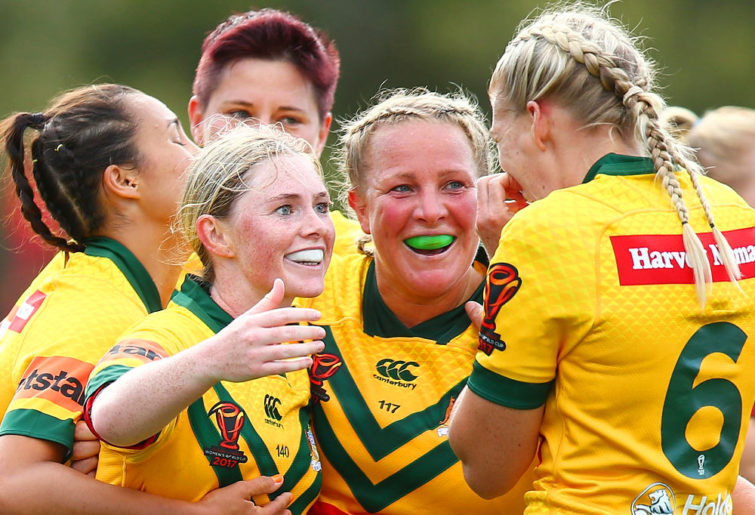
(Photo by Mark Nolan/Getty Images)
Overall, I am very happy with the approach the NRL has decided to take and it’s for the following reason – the women who play in these competitions and also who represent our country are still semi-professional.
This means that when considering and constructing the calendar for the women’s game, those with the responsibility of looking after the players and the competition need to consider a number of factors.
First, the health of the athletes themselves.
For so many of the women competing in the competition, last year saw them play more football than they had ever played before.
For some of the women competing in the competition it would have been the first time they had access to a proper gym, consistent gym routine and staff to assist them with their programs.
Because of this, bodies need to be carefully managed to ensure that injuries are few as possible.
I remember noticing in the first two seasons of AFLW how prevalent ACL injuries were – this is certainly not a situation we want repeated in the NRL, with several key players like Kezie Apps, Talesha Quinn, Corban McGregor, Ruan Sims and Sammy Bremner suffering injuries throughout this year which limited how much of the NRLW they were able to play.
Additionally, because these women are semi-professional it means that the majority of them have jobs to financially support themselves while they play footy.
The risk in extending the season or extending the State of Origin series into a three-game series is that this puts players in a position where they potentially need to take additional time off work that they either don’t have or can’t afford. This is a big issue for players that travel internationally and interstate.
I take so much confidence in the fact that women like Karyn Murphy and men like Brad Donald and Jamie Feeney continue to be involved in the development of the women’s competition.
These three are genuinely passionate about women’s footy and I know will do whatever they can to ensure that the competition remains exciting, entertaining and marketable while continuing to support the players, who are also consulted during every step of the process.
With people like this involved, I’m confident that success is guaranteed.
2018 was the year that women’s footy blew my mind. The most exciting part is that the best is yet to come and I’m already looking forward to 2019 and the Blues going back to back.
































































































